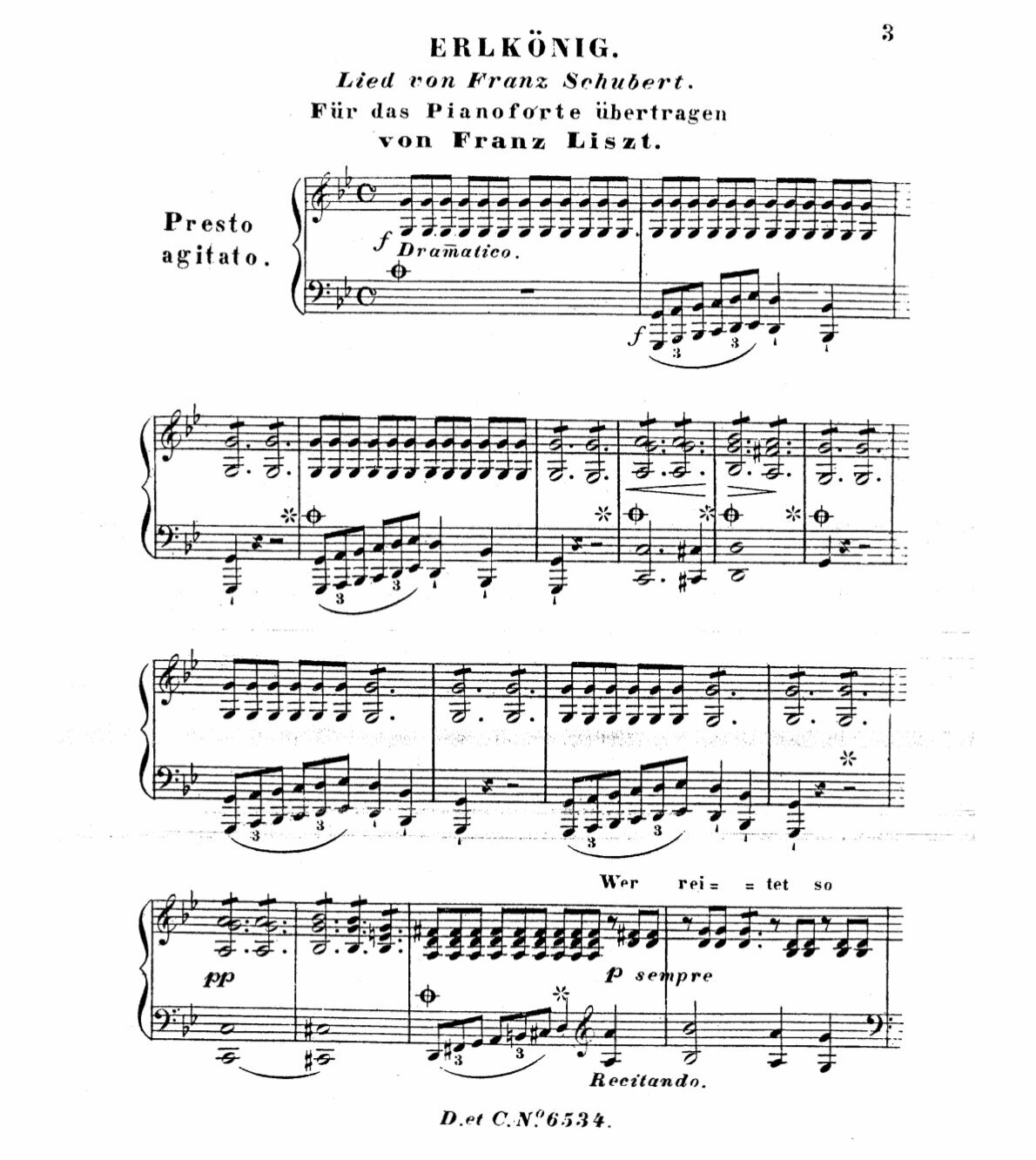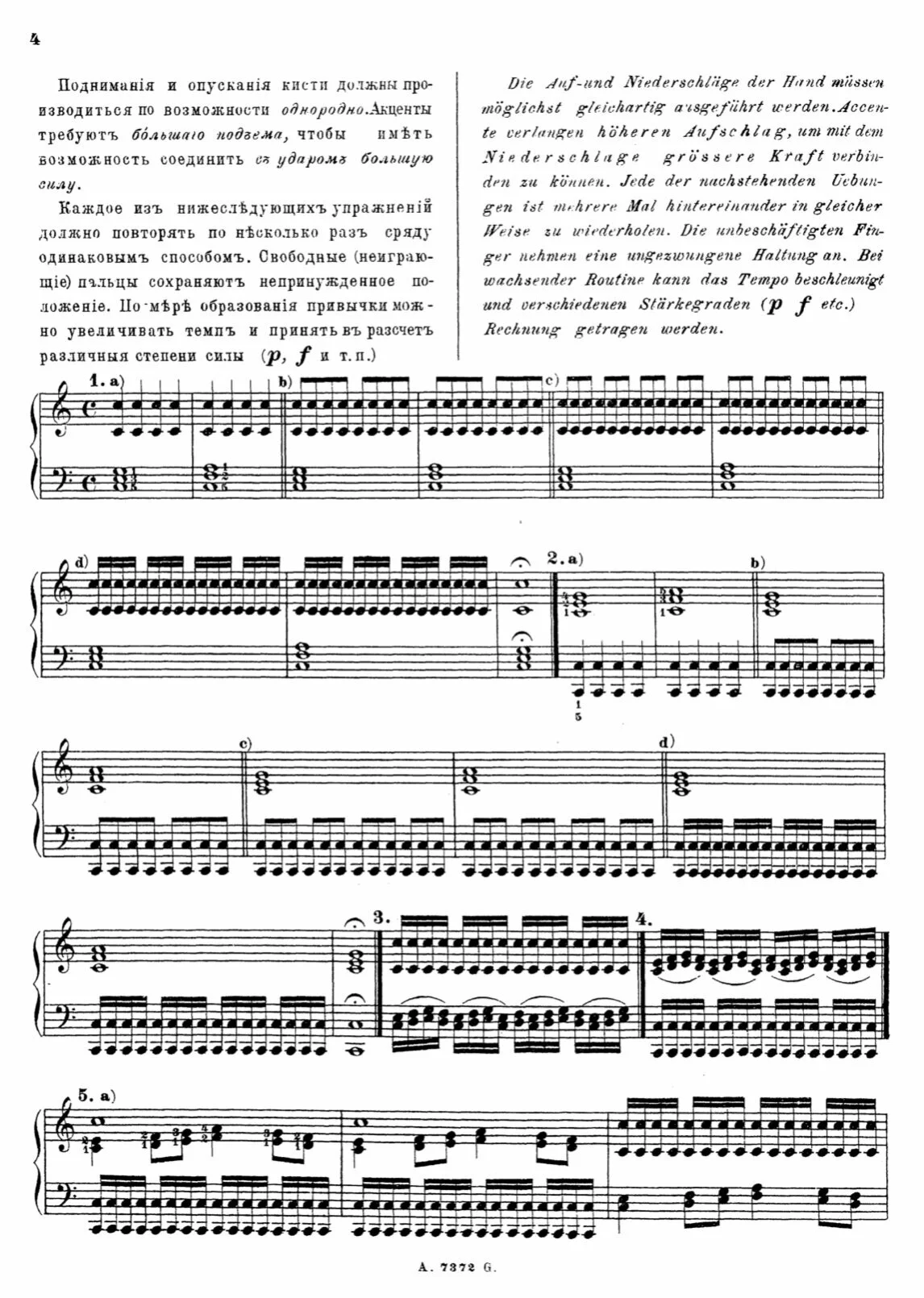PLAYING THE UNPLAYABLE - Franz Liszt’s “Erlkönig”
Julius von Klever: “Der Erlkönig” (1887, oil on canvas)
Last month I got to record the WIND project, which is now in production.
Since then, I have been playing the WIND music in concerts in the US and Europe to enthusiastic audiences, and one piece seems to be everybody’s favorite: Erlkönig by Franz Liszt.
When I collected the music for the WIND CD, I found that the number of pieces focused on wind is much more limited than expected. There is a lot of repertoire describing nature, a lot about water, but not so much about the invisible phenomenon of wind.
Digging deeper, I ended up finding roughly two CDs worth of music about wind, which left me with lots of choices for my album. Erlkönig was an early decision because of its magnificent story by Goethe, its famous setting by Schubert, and, of course, the challenging piano solo arrangement by Liszt—which I wanted to include on the WIND album.
Most listeners do not know how technically demanding this piece really is. Now that the recording is done, I would like to share with you my journey with this beloved masterwork.
Franz Liszt - Erlkönig
The score looks exciting and challenging.
The rapid-fire right-hand octaves imitate the mad race of a father riding on horseback to rescue his ill son. It’s exactly these octaves that are infamous amongst pianists for their particular technical difficulty.
Even though all of these difficult piano notes can be manufactured in the recording studio, and even though missed skips can be cut, and tempi can be manipulated, I did not want to rely on edits. Overly processed and cut recordings can make for a perfect but quite stale product. I knew I wanted to reach my listeners on a personal level. An immediate and engaging listening experience is captured best in the studio when the performer plays as if in a live recording and if possible, with a single take.
I decided I wanted to get to the point of owning the octaves and skips, the point when I could free up my focus and direct my performance attention entirely towards the interpretation of the work.
All of this meant properly prepping and playing Erlkönig and not just cutting bits together in the studio. It involved developing this knuckle buster to the highest concert level, and that meant a long term plan for a seemingly unplayable piece.
In search of a path to my goal, I followed a two-pronged preparation method of technical work on one side and interpretational work on the other.
The German piano pedagogue Theodor Kullak wrote a technique compendium called “Die Schule des Oktavenspiels” (The School of Octave Playing). I vaguely remembered it from my conservatory days.
“One day in a conversation with me at a friend’s house, Daniil Trifonov mentioned that he feels weightlessness in his arms when playing octaves”
Since I was looking to develop my octave technique, I decided to pretend to start from scratch. I embarked on a technical regiment as if I had never played octaves in my life, and I closely followed each step designed in Kullak’s compendium—it actually showed results.
Without getting deep into technical details, I noticed that it is all about freeing up the wrist from the tension of the relatively large octave span.
This freedom enabled me to play with what I now call an ‘oscillating repetition.’
Even though the infamous Erlkönigoctaves are featured only in the right hand, I ended up preparing my oscillating technique in both hands.
One day in a conversation with me at a friend’s house, Daniil Trifonov mentioned that he feels weightlessness in his arms when playing octaves. Another great idea on the way to lightning-fast octaves and what a great image!
At the same time, the interpretation of the piece had to be crafted. There really are two composers involved with Liszt’s Erlkönig: Franz Schubert, who set Goethe’s poem to the famous song for male voice and piano, and Franz Liszt, who arranged the song for solo piano.
For me, the big question became: Should the piece sound more like a Schubert song or more like a Liszt piano solo piece?
This was the time in my preparation process when I started to compare recordings. Three recordings of Liszt’s solo piano arrangement swam to the top. I list them here in order of increasing performance tempo.
Sviatoslav Richter (Metronome MM 144): I love this version for its magnificent strength and linear concept.
Evgeny Kissin (MM 158) - flawless voicing, color and clarity:
Yuja Wang (MM 160) - superhuman yet playful tempo:
After some dedicated work, both on my interpretation and technique, I found that I was still unsatisfied with my performance. This brought me to re-discover the Lied interpretation of Erlkönig.
“I had the unforgettable opportunity to hear Fischer-Dieskau live in concert. The concert featured Die Winterreise of Franz Schubert. I clearly remember how much the stories and words stood in the foreground and how the vocal lines were just a means to communicate them”
For the Lied version of Erlkönig, I returned to two performances that left deep impressions on my artistic development in the past:
Jessye Norman, whose powerful voice seems to transcend any limitations. I adore her flawless diction, her immediacy of storytelling and her acting in this staged production:
Dietrich Fischer-Dieskau, the gold standard for Schubert’s songs:
In my undergrad, I had the unforgettable opportunity to hear Fischer-Dieskau live in concert. The concert featured Die Winterreise of Franz Schubert. I clearly remember how much the stories and words stood in the foreground and how the vocal lines were just a means to communicate them. Amazing!
Immediately after listening to these recordings, it became clear why my Erlkönig rendition still didn’t feel right. What was lacking was the sense of human breath and of a voice that permeates the piece even when it is played without a vocalist in its piano solo version.
When I embark on the preparation of a piece, I usually come full circle. I return to my initial impression of the piece. Erlkönig developed the same way. I am quite sure that it was Goethe’s words and story that inspired Franz Schubert to write one of his most famous songs. And it was the poem that led Franz Liszt to write his magnificent solo arrangement.
I decided on an interpretation mostly guided by the great poem of J. W. v Goethe, and I took my cues from Schubert’s song interpretation of two of my favorite artists Jessye Norman and Friedrich Fischer-Diskau.
I feel that Fischer-Dieskau’s voice, as I heard in that live concert, now comes through in my recording of Erlkönig.
Thank you for being part of my artistic journey and my search for the perfect interpretation of Franz Liszt’s Erlkönig.





